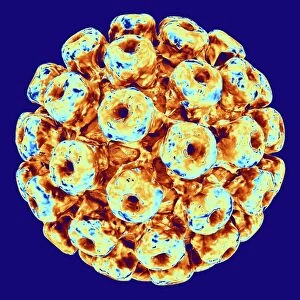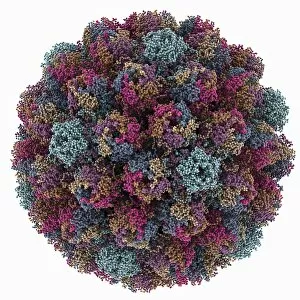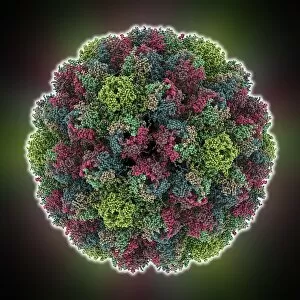Polyomavirus Collection
Polyomavirus, also known as the Polyoma BK virus, is a fascinating subject of study in the field of virology
All Professionally Made to Order for Quick Shipping
Polyomavirus, also known as the Polyoma BK virus, is a fascinating subject of study in the field of virology. This group of small DNA viruses has captured the attention of scientists worldwide due to their unique characteristics and potential implications for human health. In this captivating artwork C013/7465, we are presented with a series of conceptual images that depict the polyomavirus in all its intricate glory. The repetitive patterns showcased here highlight the symmetrical nature of this viral family, showcasing its distinctive capsid structure. The first few images showcase a conceptual representation itself - an elegant arrangement of proteins forming a spherical shape. These striking visuals give us a glimpse into the microscopic world where these tiny particles exist. Moving forward, we encounter another conceptual image portraying what seems to be a ubiquitous virus floating amidst various cells. This depiction reminds us that polyomaviruses can infect numerous species across different environments, making them truly versatile pathogens. Delving deeper into specific strains within this viral family, we come across an artistic rendition depicting murine polyomavirus capsid. The delicate lines and curves beautifully capture its complex architecture while emphasizing its significance in animal research models. Lastly, our attention is drawn towards avian polyomavirus capsid – yet another variant within this diverse group. Its distinct features are highlighted through meticulous detailing and vibrant colors used by the artist. These captivating artworks not only serve as visual representations but also ignite curiosity about these enigmatic viruses among viewers from all walks of life. They remind us that even at such minuscule scales, there exists an entire world waiting to be explored – one where understanding and combating diseases like polyomavirus play crucial roles in safeguarding human and animal health alike.












